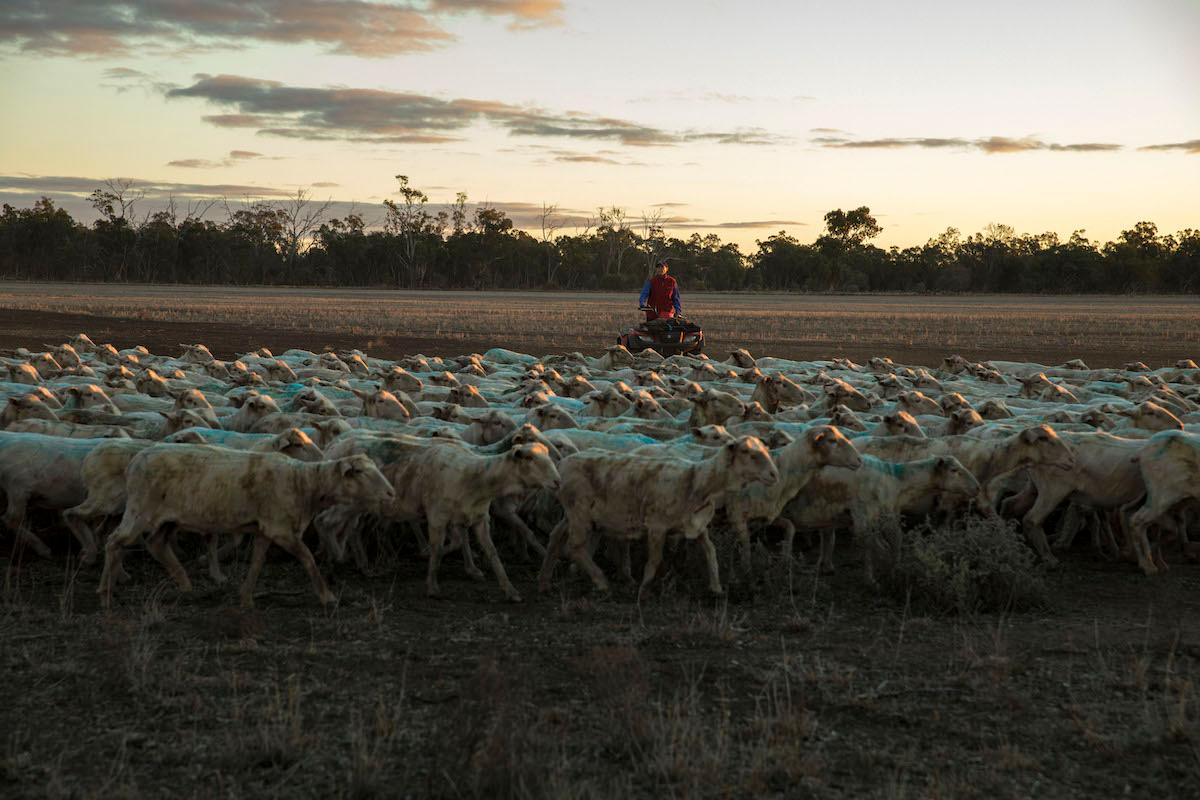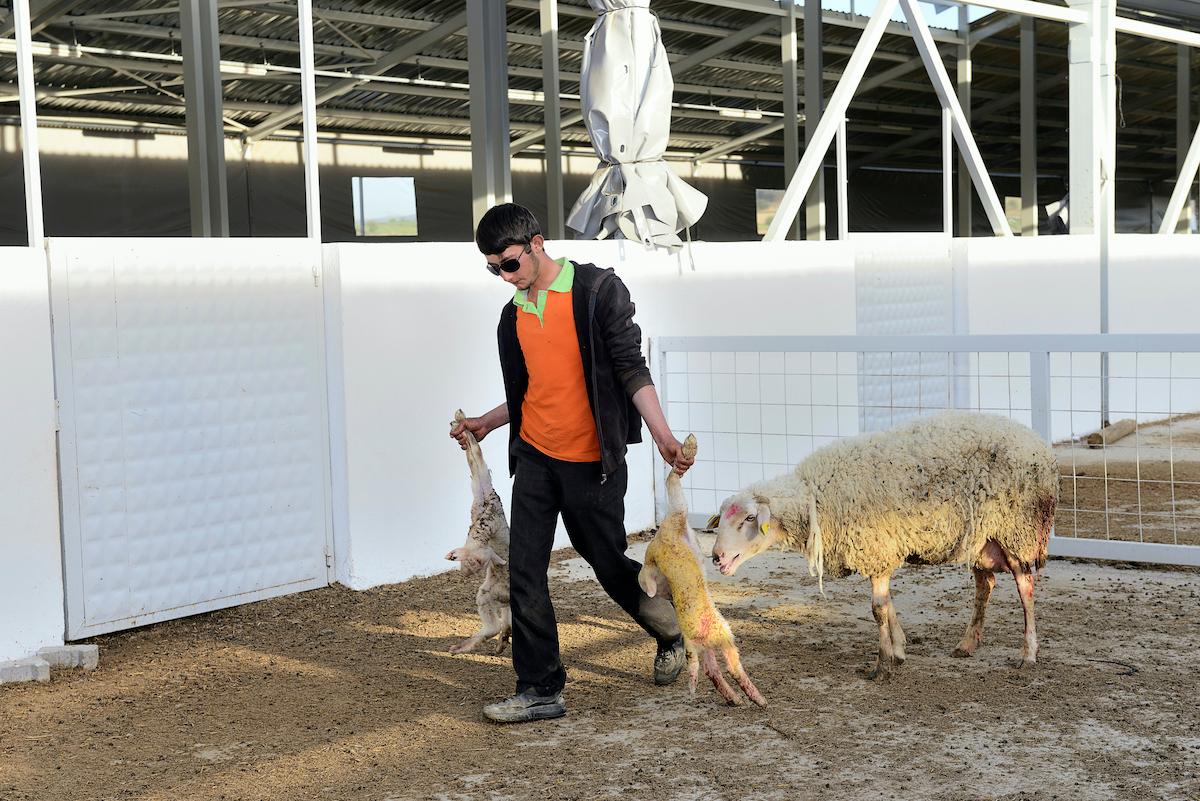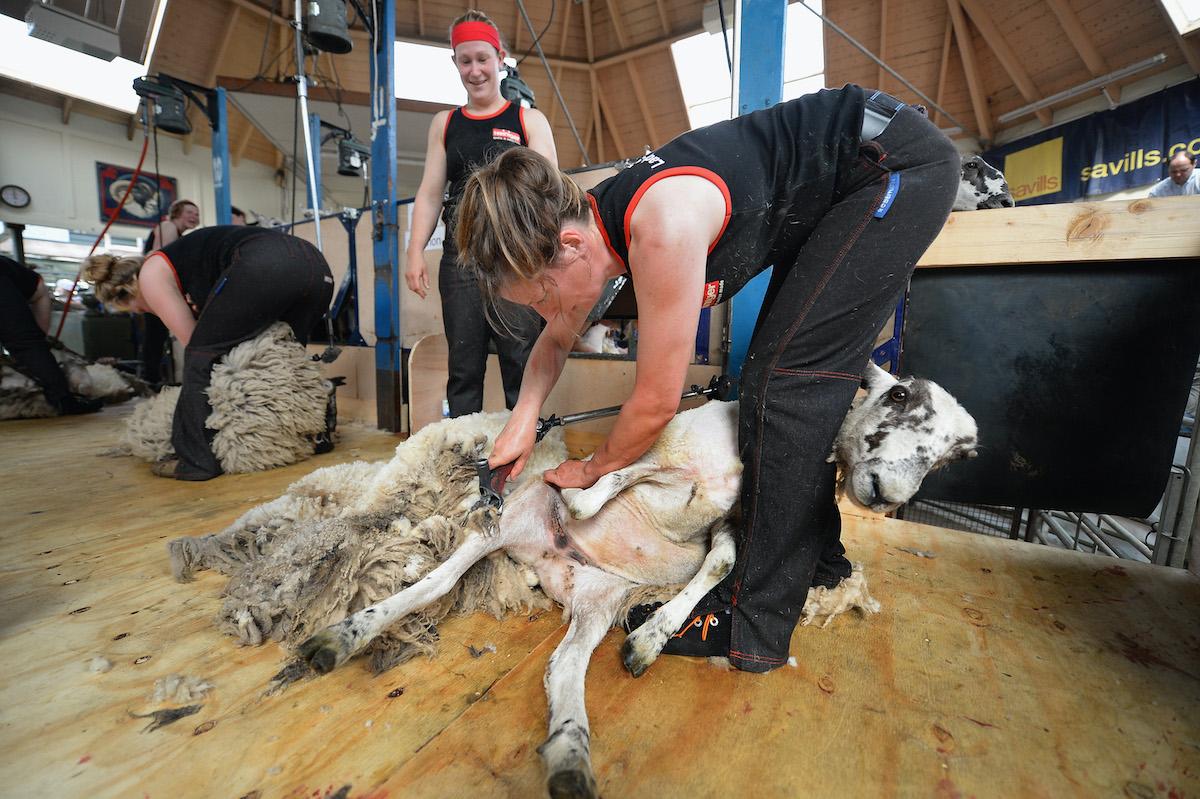Is Wool Actually Sustainable? Sheep Are Second to Cows for Methane Emissions
Is wool actually sustainable? The material, made from the coat of sheep, is not as eco-friendly as it seems.
Updated Aug. 25 2023, 1:15 p.m. ET

Made from the coat of sheep, wool clothing is a popular choice for sustainability-minded fashion designers, consumers living zero-waste lifestyles, those who can afford it, and... those who aren’t aware of exactly what goes on in the wool industry, which is heavily connected to the animal agriculture industry.
If animal agriculture is one of the most environmentally-destructive industries on Earth, then how can wool actually be good for the planet? Is wool actually sustainable?
To learn more sustainability in the wool industry, read on.
Is wool sustainable?

Sustainability measures an entity’s ability to be maintained at a certain rate, taking into account its impact on the environment. While wool has a reputation in many circles for being natural and sustainable, the data shows that it is far less sustainable than it seems — and far less sustainable than many of its alternatives. Globally, raising livestock (including sheep raised for wool) is responsible for an estimated 18 percent of human-caused greenhouse gas emissions — and we cannot sustain our planet much longer with all these unnecessary emissions.
Is wool compostable?
As long as your wool garment is not blended with synthetic fibers and does not have synthetic thread in it, it will most likely break down in your compost bin. However, just because a fabric is compostable does not mean it is sustainable.
Do sheep emit methane?

Like cows, who are known for emitting extensive amounts of methane, sheep are ruminants — and they also emit significant amounts of methane. In fact, sheeps are second to cows in terms of methane emissions. And in New Zealand, which is known for producing wool, sheep farming accounts for more than 90 percent of the country’s GHG emissions, according to PETA.
Like cattle farming, sheep farming also uses tons of water, land, grain, and other resources. And with 500 million sheep killed every year (for the wool industry, the mutton and lamb industry, and both combined), that’s a lot of resources.
Do sheep really need to be sheared?
To bring the wool industry to the behemoth that it is today, humans have selectively bred sheep over centuries so that they produce ample hair — so when you hear people say that sheep need to be shorn, the only reason that is true is because humans have bred them to grow all that hair.
This myth is not just a misunderstanding — it’s perpetuated by the wool industry. For example, some wool companies claim that sheep “need a trim from time to time,” playing into the false notion that humans are doing the hairy animals a favor by taking their wool. So no, sheep do not naturally need to be shorn.
Does shearing and mulesing hurt?

Humans are constantly breeding, raising (often on factory farms), shearing, and slaughtering sheep; once they no longer produce enough wool to be profitable, they are killed for their meat. Beyond the fact that sheep are slaughtered, the production of wool raises a few ethical questions.
Livestock on large-scale farms (where the large majority of animal products come from) are often forced to live in crowded or diseased conditions where they are not given proper medical care. Additionally, it’s common practice for sheep farmers to inflict mulesing on sheep, which is when the tail and a large area of surrounding skin are sliced off, without anesthesia or painkillers.
Additionally, the process of shearing is something that many of us imagine as a serene visit to the dog groomer — unfortunately, that is not the case. Wool shearers are often under pressure to get their job done as quickly as possible, which leads them to forcefully hold down the sheep and injure or burn them in the process with the electric combs — a process that values profit above animal welfare.
Not to mention, farmers from the wool industry will often sell lambs (under 1 year of age) off as meat — so when you pay for wool clothing, you’re also paying for baby lambs to be slaughtered.
The alternatives to wool are generally plant-based fabrics — so why contribute to the wool industry when you could just buy a cotton sweater instead?
Is Allbirds sustainable?
Allbirds is a New Zealand-based company that makes shoes from “sustainably and ethically sourced” merino wool. Allbirds even uses images of happy sheep (and baby lambs) in its marketing, and the trendy company’s website is filled with claims that make the customer feel like buying Allbirds is a positive choice for the planet — but there’s a lot left between the lines.
An oft-cited statistic from the wool industry (as featured on Allbirds’ website) is that sheep outnumber humans about six to one, making customers feel like there’s naturally an abundance of wool to go around. However, the reason that sheep are so abundant there is because the wool and meat industries are breeding sheep.
Allbirds also claims that its wool is sourced ethically “to ensure that absolutely no harm is done to the sheep.” But based on most accounts of the wool industry, that’s likely too uncommon to be true, at least to this degree. Allbirds declined Green Matters' request for comment.
In 2022, Allbirds unveiled its first vegan shoe, made from rubber, citrus peels, rice hulls, and plant oils. Hopefully the company will continue transitioning in that direction.
Allbirds is just one example of fashion companies with sustainable missions who surprisingly use a lot of wool; others include designers Stella McCartney and Eileen Fisher. Stella McCartney has long been a vegetarian brand, and her fashion house has revolutionized the fashion industry’s perception of vegan leather. It would be incredible to see her do the same for wool, too.
Alternatives to wool are easy to find.

With so many environmentally-conscious people eschewing beef and dairy for environmental or animal welfare reasons, why aren’t as many doing the same for wool? Fortunately, like with beef and dairy products, there are endless alternatives to wool. For basics like sweaters, hats, scarves, gloves, and peacoats, look for garments made from sustainably-sourced natural materials such as cotton or bamboo; for the business people out there, check out Tenderly’s guide to vegan suits, which are typically made from wool; and for an alternative to wool dryer balls, several companies make bamboo dryer balls.
And if you really do enjoy wearing wool, or if you like that the material is biodegradable, a great hack is shopping for the fabric secondhand. By buying wool secondhand, you’ll still get to enjoy the fabric without contributing to the wool industry, you’ll save money, and you’ll be diverting items from the waste stream!
This article, originally published on Nov. 23, 2020, has been updated.